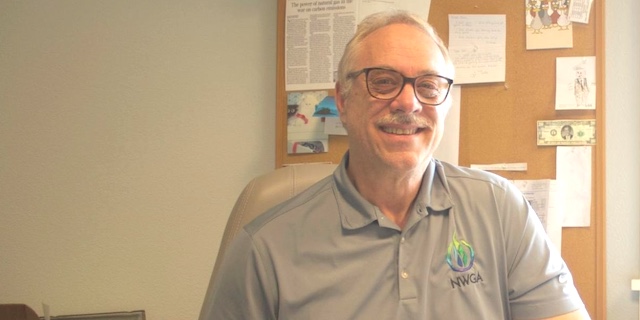Industry advocate sees war on natural gas flaming out
Published 7:30 am Friday, April 11, 2025

- Northwest Gas Association CEO Dan Kirschner says the war on natural gas has cooled. (Don Jenkins/ Capital Press)
WEST LINN, Ore. — Because of fracking, U.S. natural gas production started taking off in 2008. Ironically, that created an existential crisis for the industry, says Northwest Gas Association CEO Dan Kirschner.
Proved reserves, the volume of natural gas that could be economically tapped, also shot up. The U.S. was loaded with natural gas for decades to come.
“The reaction, from environmental interests in particular, was, ‘This is a threat to our objective of greening the grid,’ ” Kirschner said. “Natural gas is a risk to those who really want to see a 100% net-zero future.”
Washington state passed a law in 2019 to phase out natural gas by 2045. In 2020, then-Gov. Jay Inslee acknowledged people like cooking with natural gas. By 2022, he was calling natural gas in homes “noxious” and “dangerous.”
Like it or not, however, green-minded Washington relies on natural gas. Measured by British thermal units, natural gas provides more energy than any other power source in the state, according to the U.S. Energy Information Administration.
U.S. agriculture also relies on natural gas. Agriculture consumes 15% of all the natural gas used for industrial purposes in the U.S., according to a 2021 study by the American Gas Association.
The U.S. exports more natural gas than any other country and set domestic consumption records in 2024.
As coal plants close, the importance of natural gas has become clearer to policymakers, Kirschner said. The war on natural gas has waned, he said.
“It feels like right now there is a break,” he said. “The pendulum swung and swung hard, and right now it’s paused.
The Northwest Gas Association represents gas utilities and pipeline companies. Kirschner, 67, has led the trade association since 2002. The association has an office in West Linn, a Portland suburb.
The day before the Capital Press interviewed Kirschner, President Trump signed executive orders to open up new coal mines on federal lands, encourage new coal plants and keep old ones from closing.
Most of the natural gas used in the Northwest comes from Canada. Tariffs might increase the cost of natural gas, but it’s doubtful a resurgence in U.S. coal will crowd out natural gas in the Northwest, Kirschner said.
“Natural gas is abundant and affordable,” he said. “I just don’t see coal displacing natural gas.”
Renewable natural gas decarbonizes the grid by capturing methane that would otherwise go into the atmosphere. Manure from large dairies is a potential source of renewable natural gas. Once purified, renewable natural gas is indistinguishable in its transmission and uses from conventional natural gas.
Capturing, purifying and piping renewable natural gas, however, is much more expensive than producing and distributing conventional natural gas. Still, Kirschner said he thinks there will be opportunities for renewable natural gas developments.
“Washington, Oregon, California and British Columbia all want to continue to decarbonize,” he said. “There remains enough of a policy-driven push to decarbonize to warrant development of larger renewable natural gas projects.”
Kirschner said he’s skeptical Washington can meet its goal to phase out natural gas from the grid. The state’s energy strategy depends on transmitting huge amounts of wind power on yet-to-be-built interstate transmission lines. Batteries capable of supplying energy for days when wind and sun power ebb don’t exist.
“Today, it looks like technologies aren’t moving quickly enough to match up with compliance deadlines,” Kirschner said. “There are physical barriers to get there if you want to retain adequate resources.”
Washington lawmakers could encourage decarbonizing the grid by investing cap-and-trade funds into getting renewable natural gas hooked up to existing natural gas pipelines, Kirschner said.
“Those aren’t going away because we need them,” he said. “We’re a big part of the overall energy picture.”






